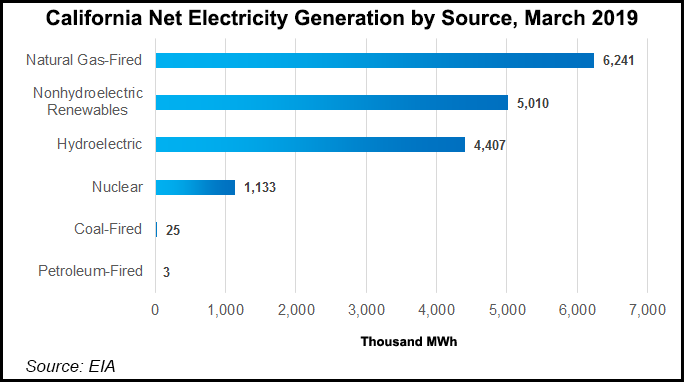Regulatory | NGI All News Access | NGI The Weekly Gas Market Report
California Preparing to Accelerate Transition to Carbon-Neutral Economy
California has allocated $1.5 million to identify ways to speed a smooth transition to a carbon-neutral economy by 2050.

Gov. Gavin Newsom last month signed the $214.8 billion budget, which included a “carbon-neutral economy” budget item in part of the California Environmental Protection Agency (CalEPA) fiscal 2019-2020 spending plan.
In the final budget language the study is supposed to emphasize environmental and economic policies to “dramatically” reduce fossil fuel demand by 2050, in line with California’s aggressive climate change goals. The research work is expected to “inform” the California Air Resources Board scoping plan for the overall climate initiative.
CalEPA Deputy Director Sam Delson outlined for NGI some topics already identified for the study, which will involve the transportation, labor and natural resources agencies, along with the governor’s planning/research office.
Study topics include:
The state agencies involved are to develop the precise scoping process to set the study’s content and direction, Delson said.
“Scoping of the study will include a timeline for opportunities for public (including industry) participation and completion of the study.” The state’s study is to be completed by “a group of independent academic experts and prepared with robust public engagement.”
The Western States Petroleum Association emphasized that California’s oil and gas “will remain a vital part of the energy mix for the foreseeable future,” said President Catherine Reheis-Boyd. In addition, “access to safe, affordable energy is the foundation for economic growth.”
Renewable energy alone in California cannot meet demands for a sustainable energy future, Reheis-Boyd noted.
“Rather than studying potentially one-sided solutions, what we should be asking ourselves is how can we best balance the equally important needs of equality, environment, economy, and a truly sustainable energy future?” The plans for a carbon-neutral future need to consider economic impacts on the four in 10 Californians living at or below the poverty level, she said.
California’s climate goals include reaching carbon-neutrality statewide by 2045 and reducing greenhouse gas emissions to 80% of 1990 levels by 2050, while taking into consideration U.S. Clean Air Act legal requirements.
© 2024 Natural Gas Intelligence. All rights reserved.
ISSN © 1532-1231 | ISSN © 2577-9877 | ISSN © 1532-1266 |
